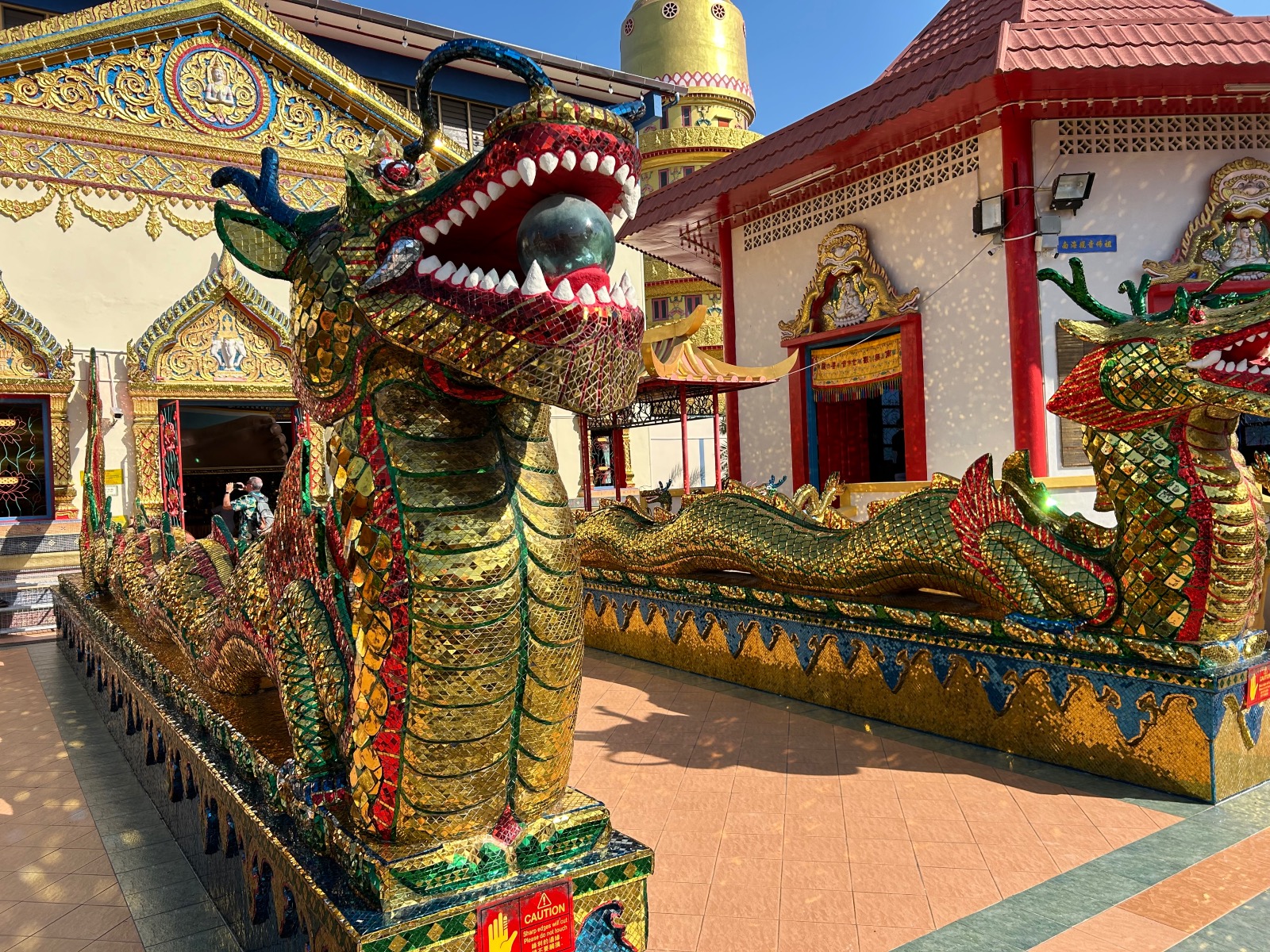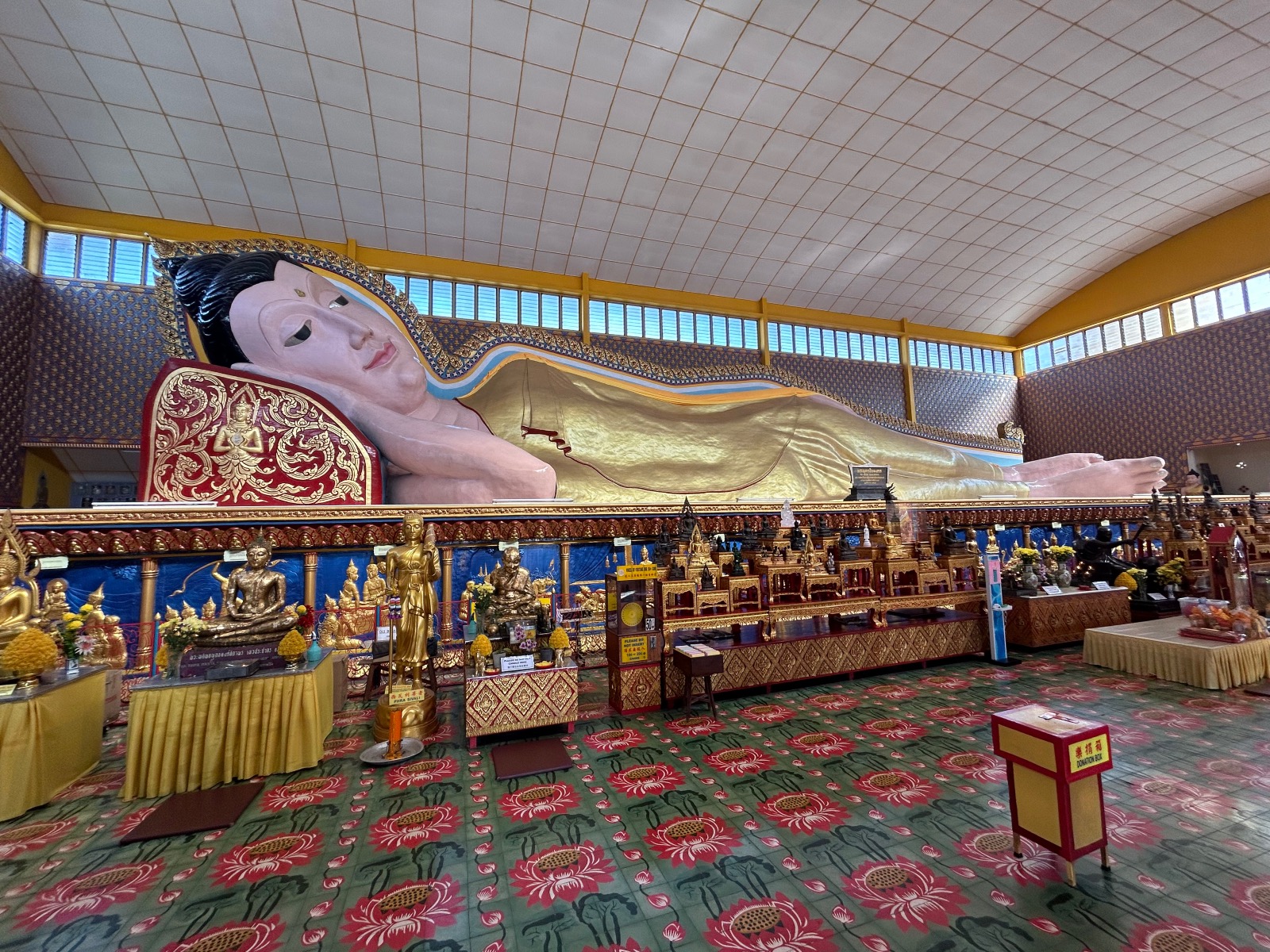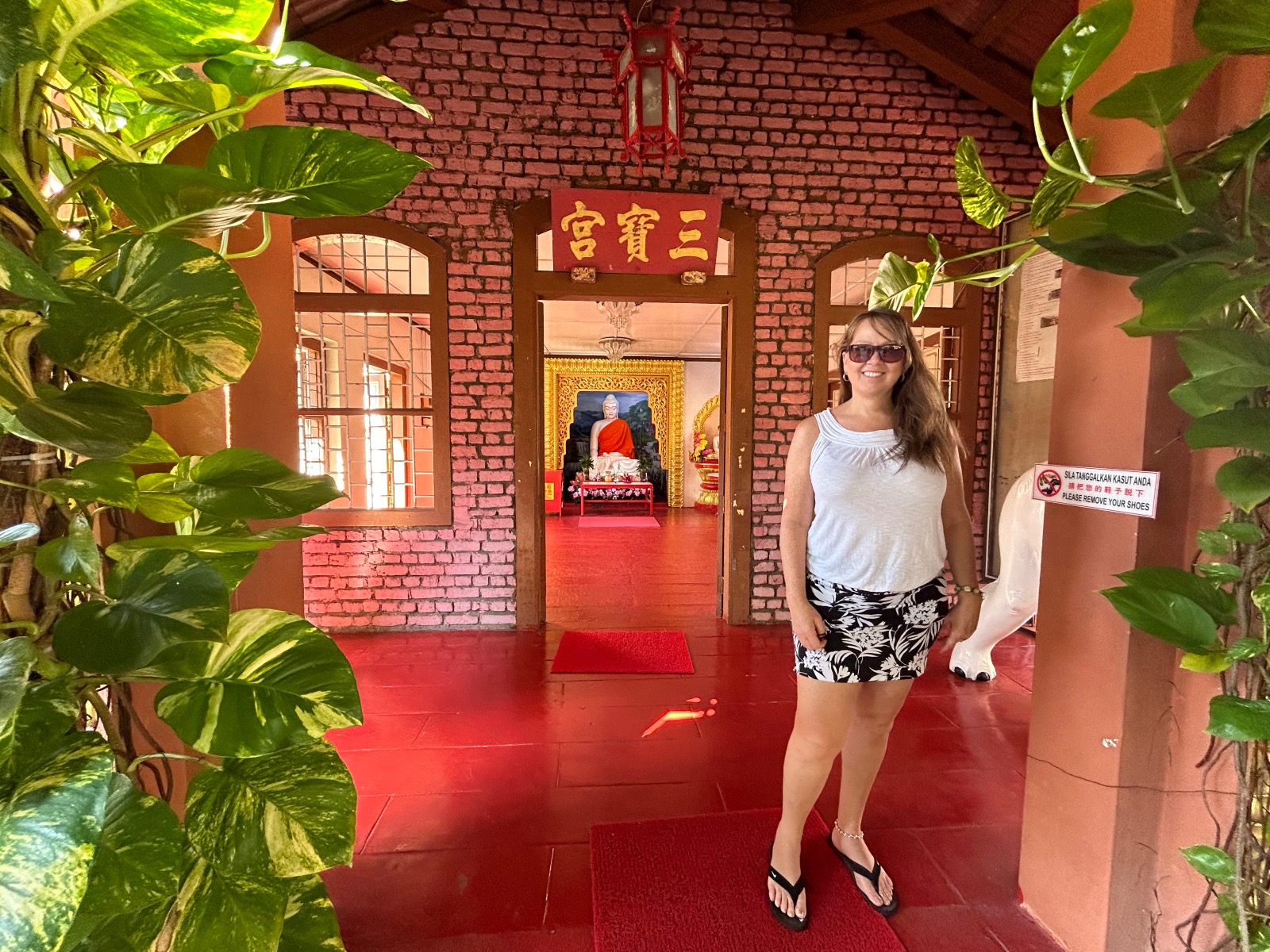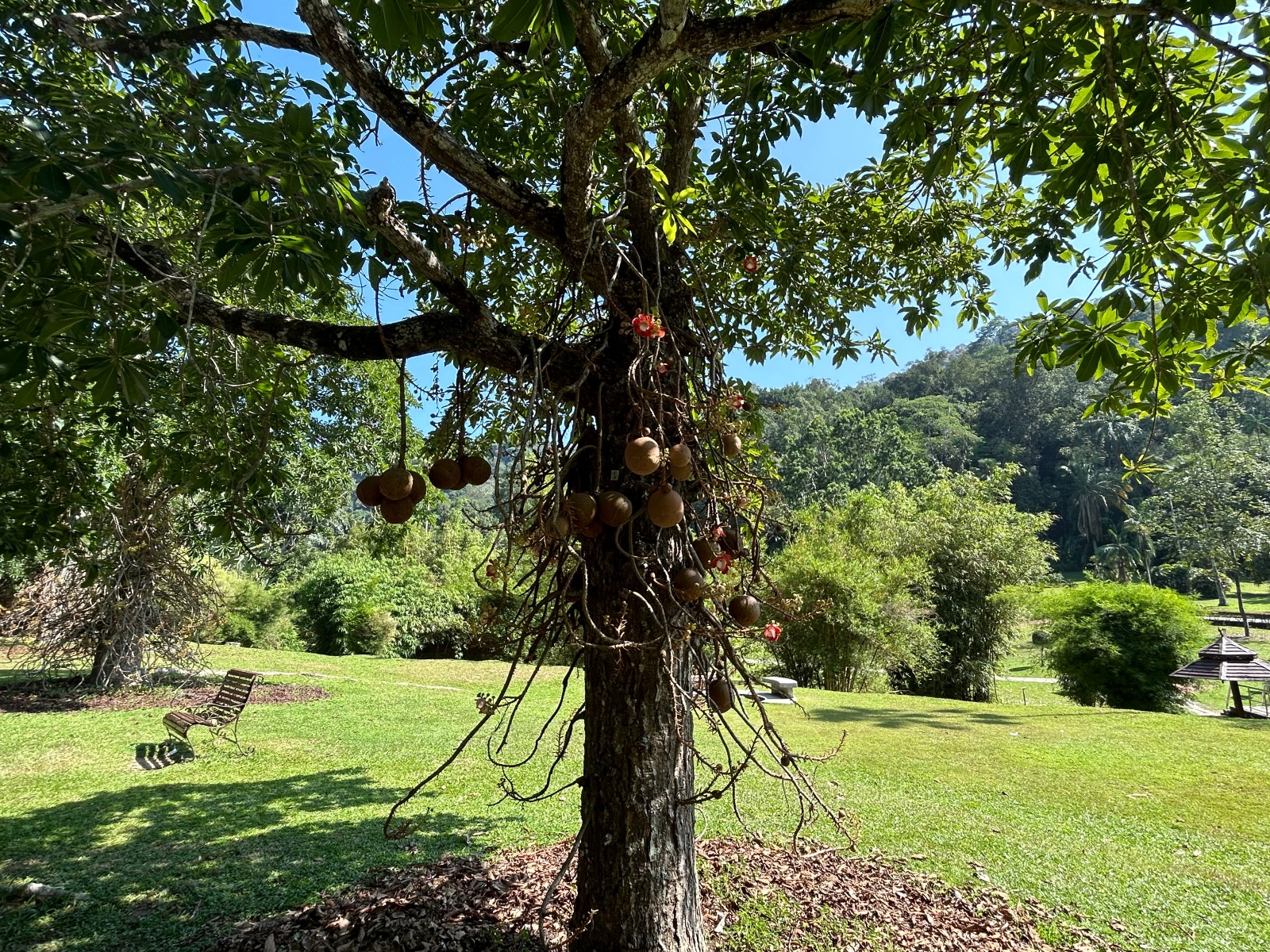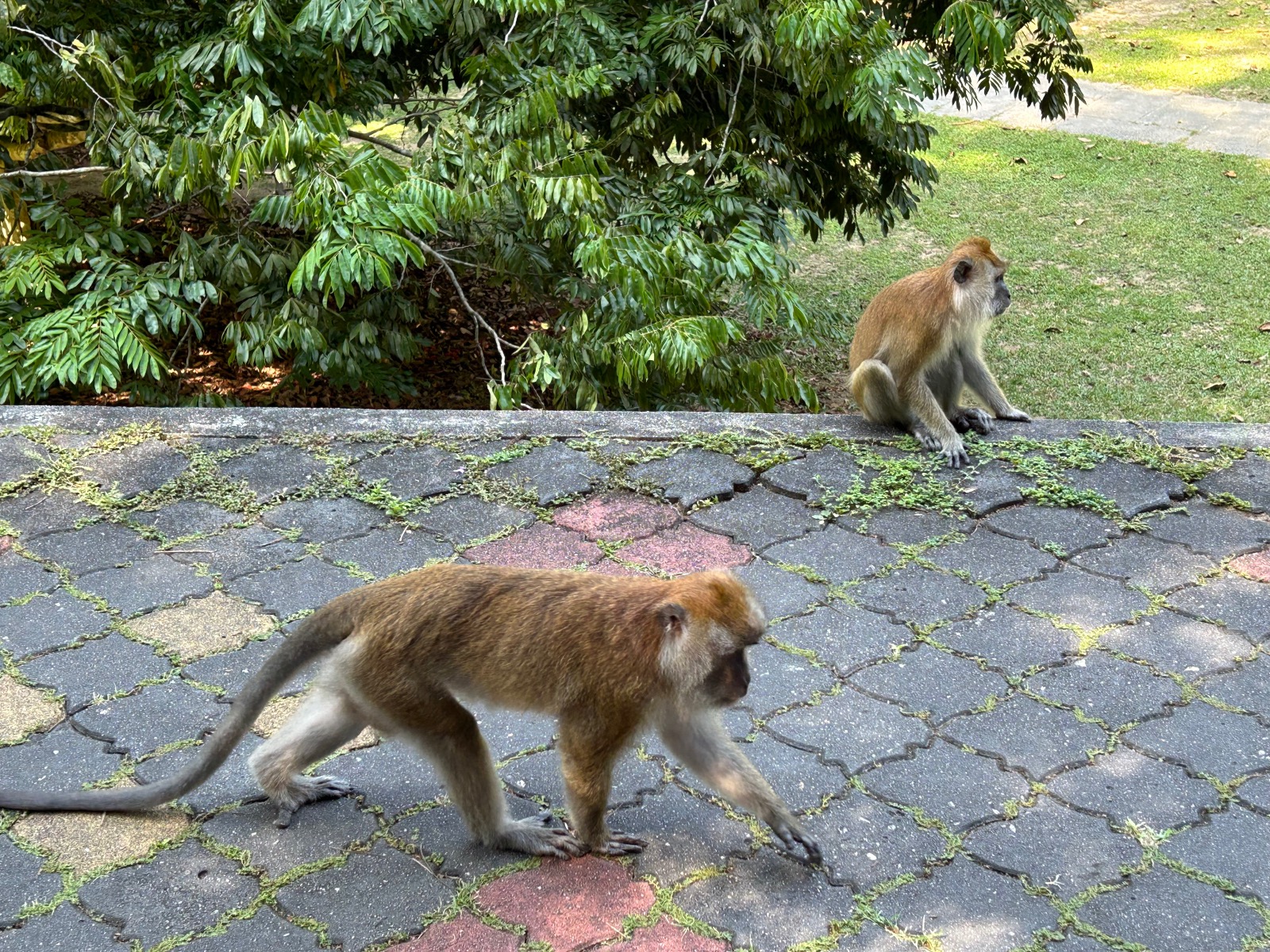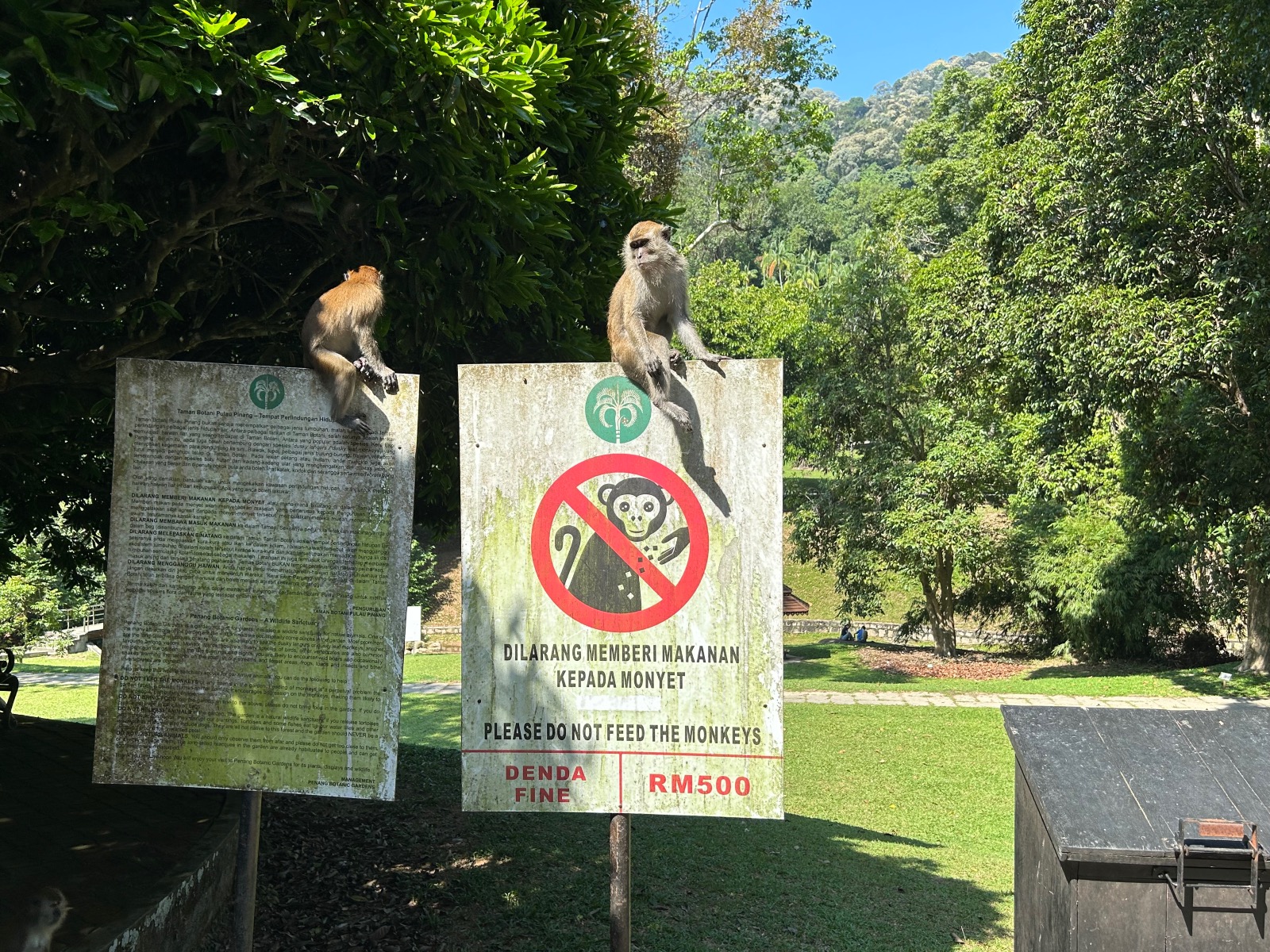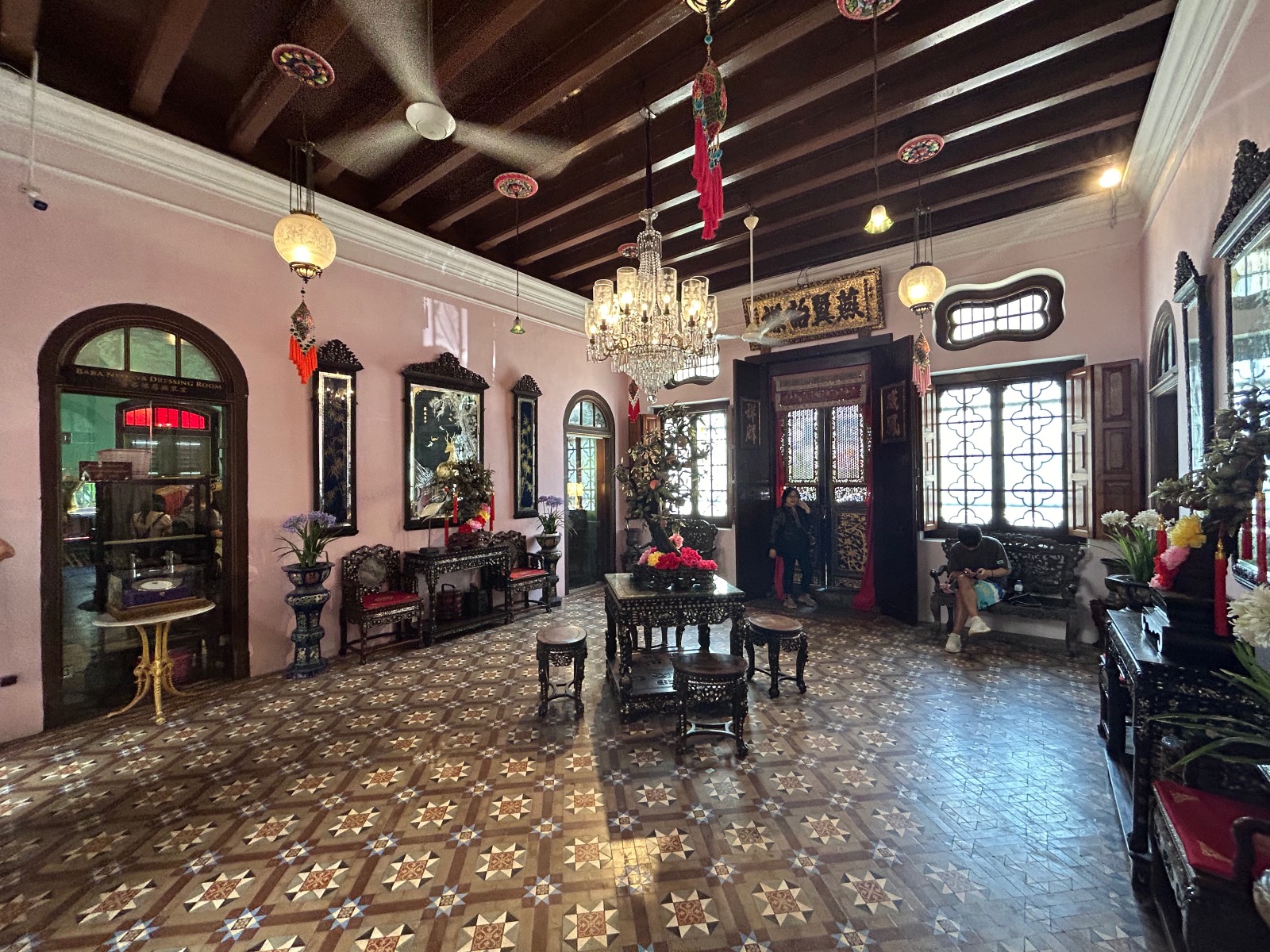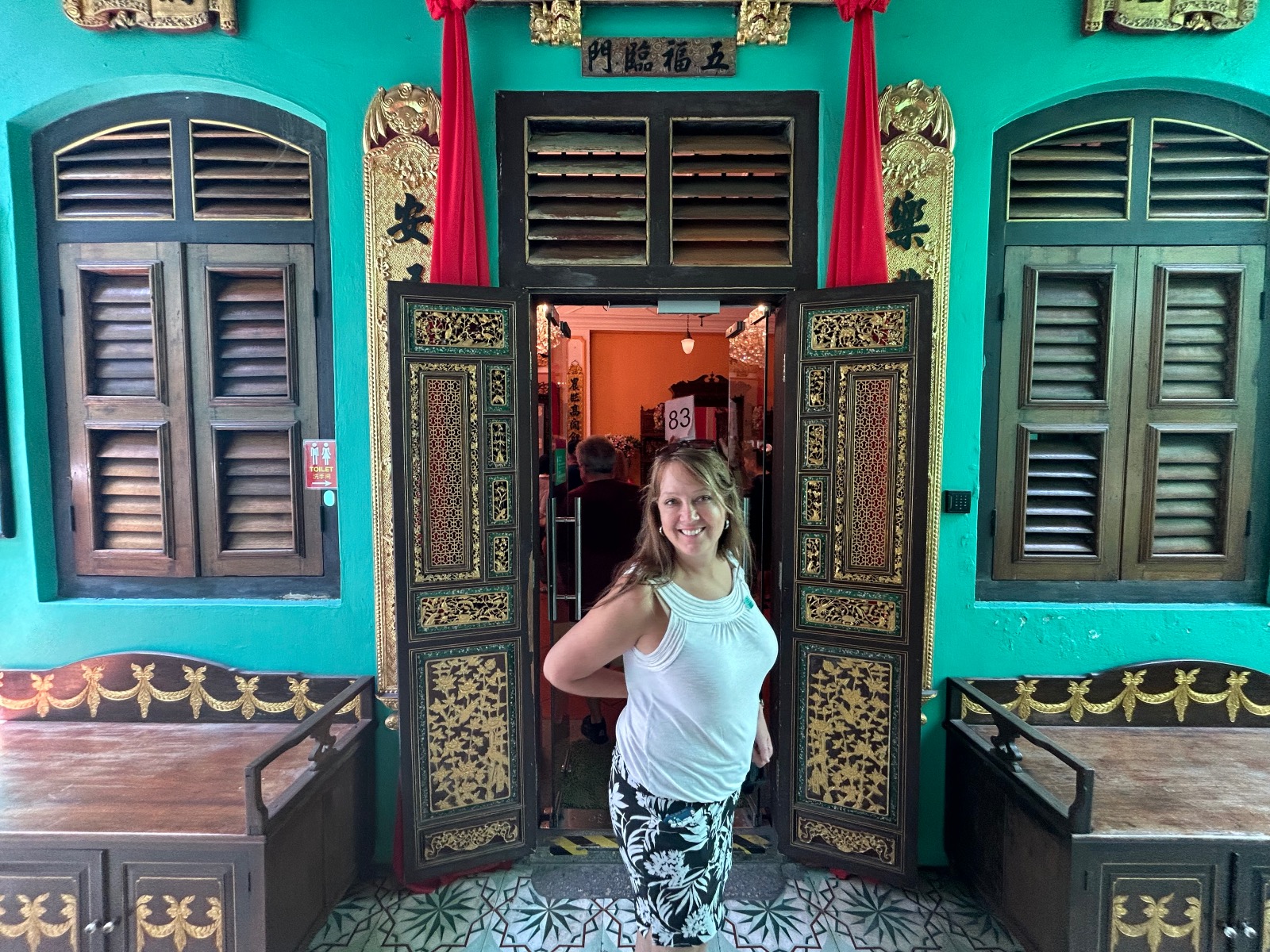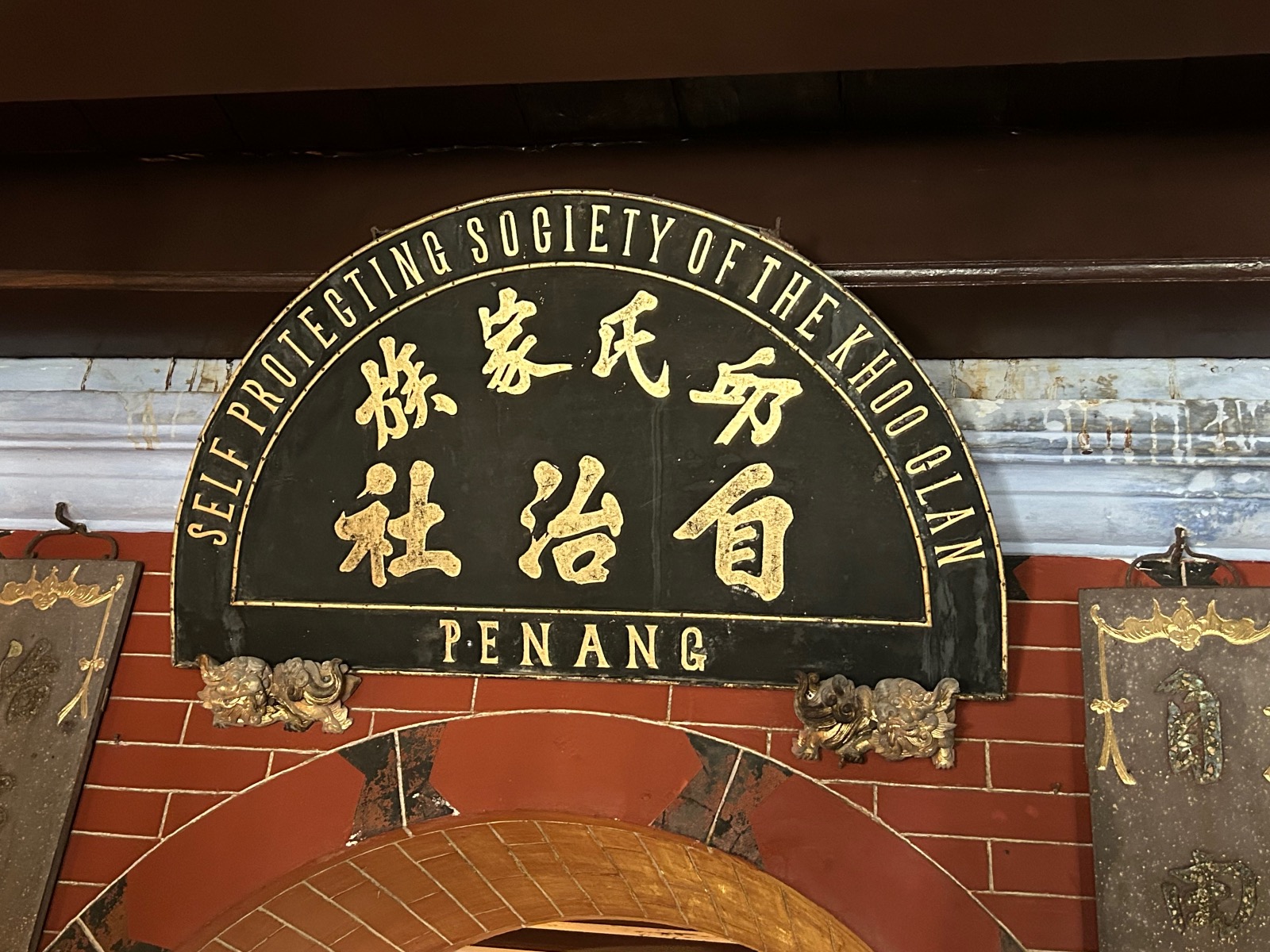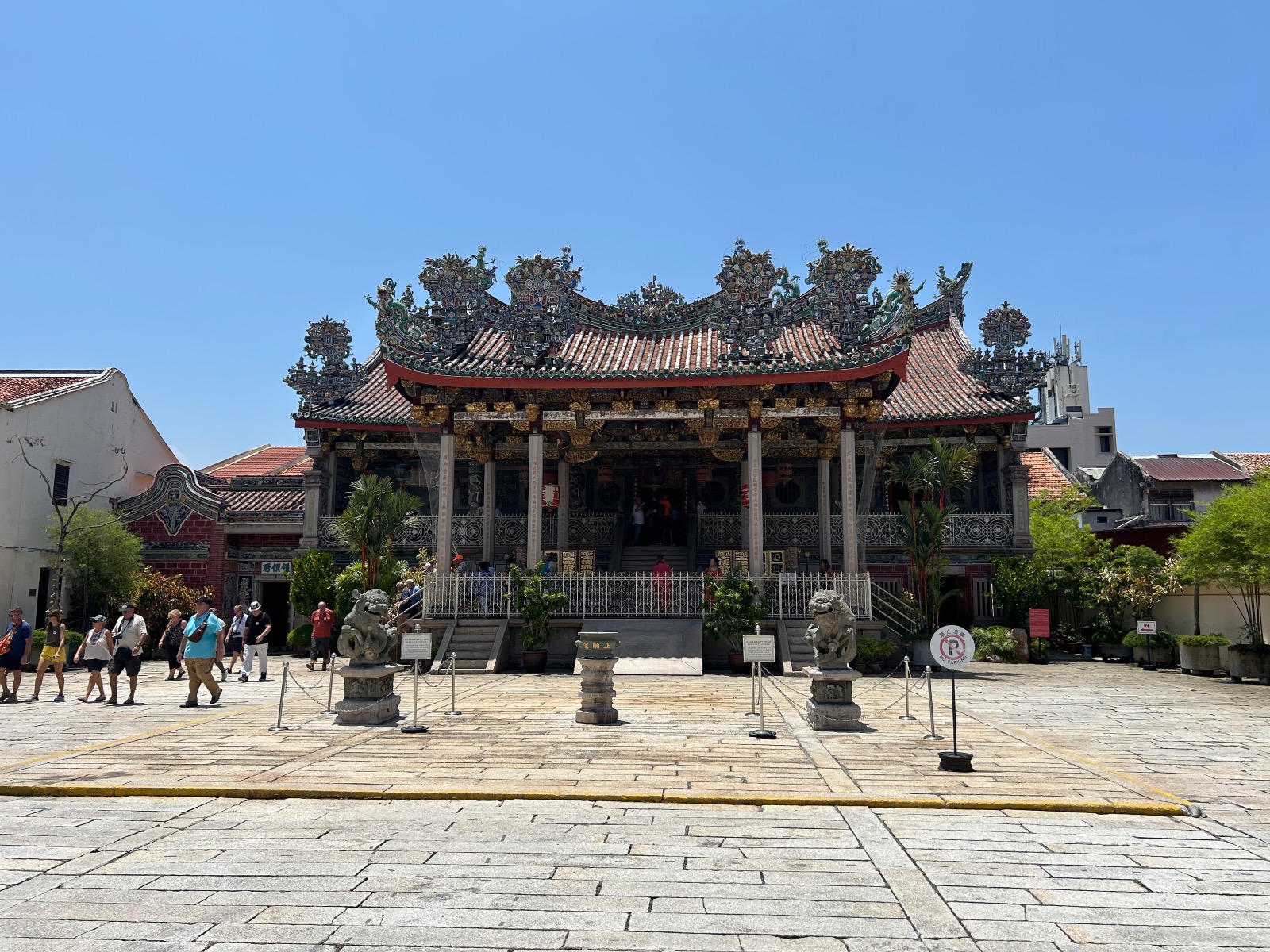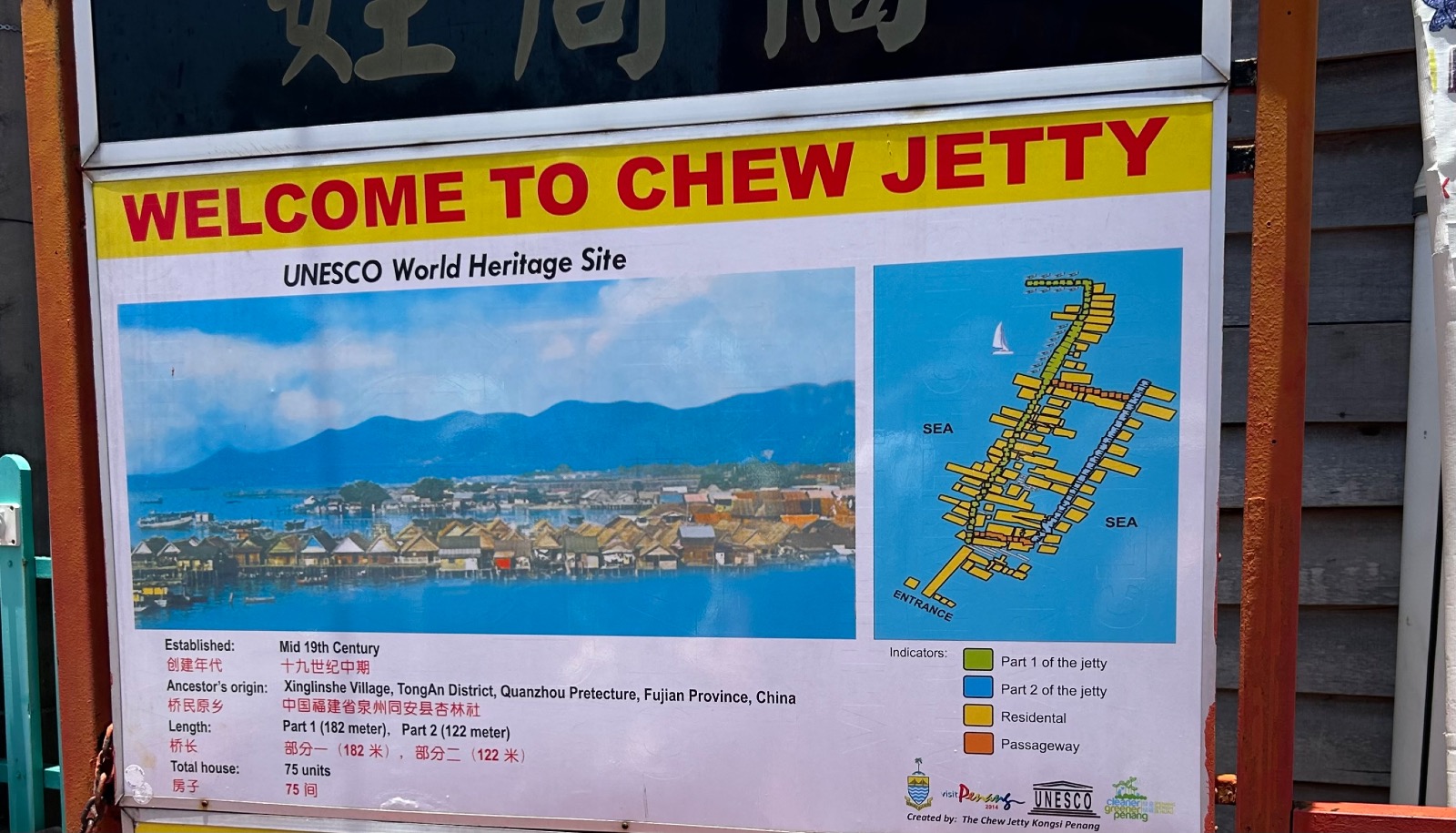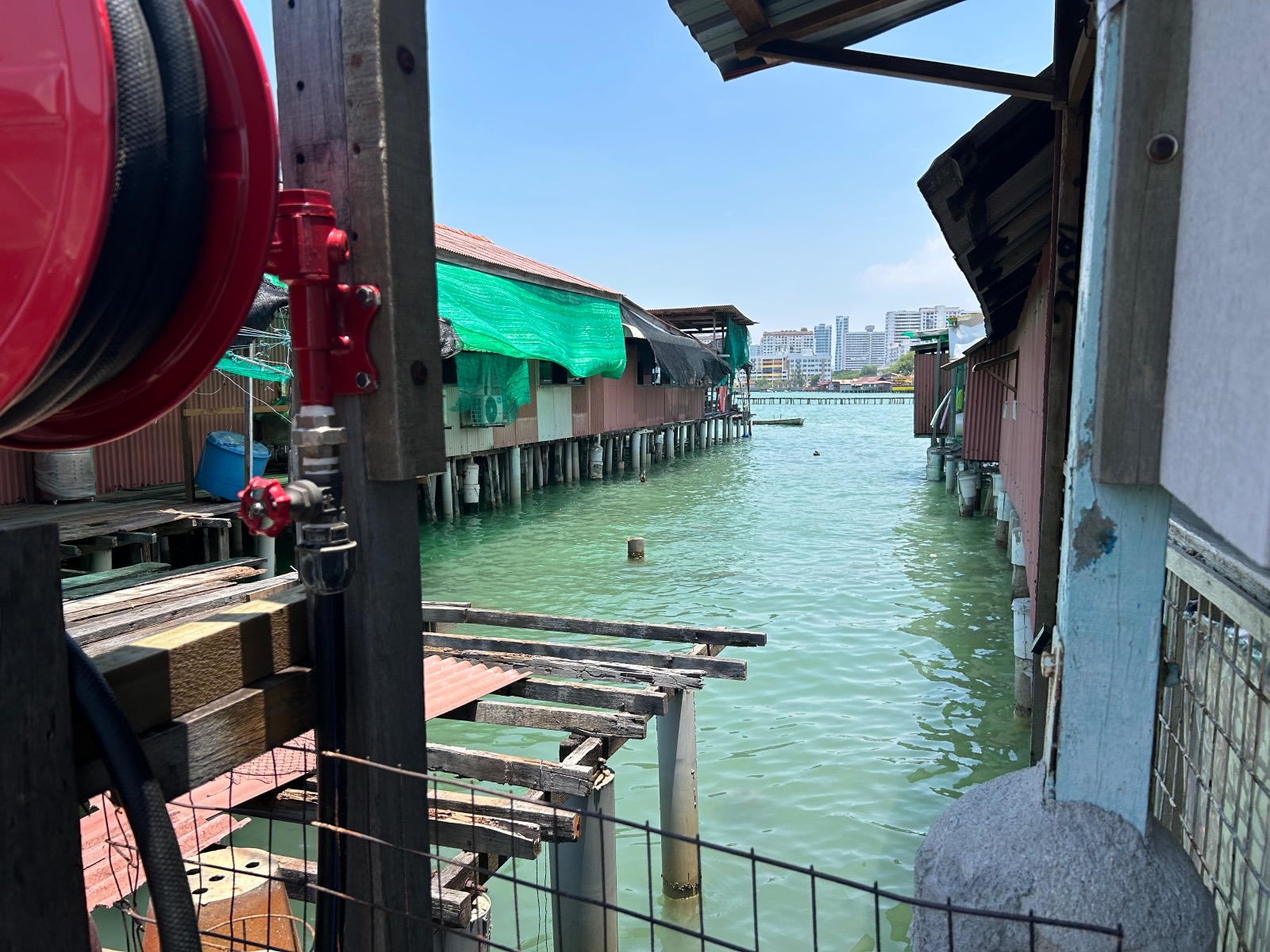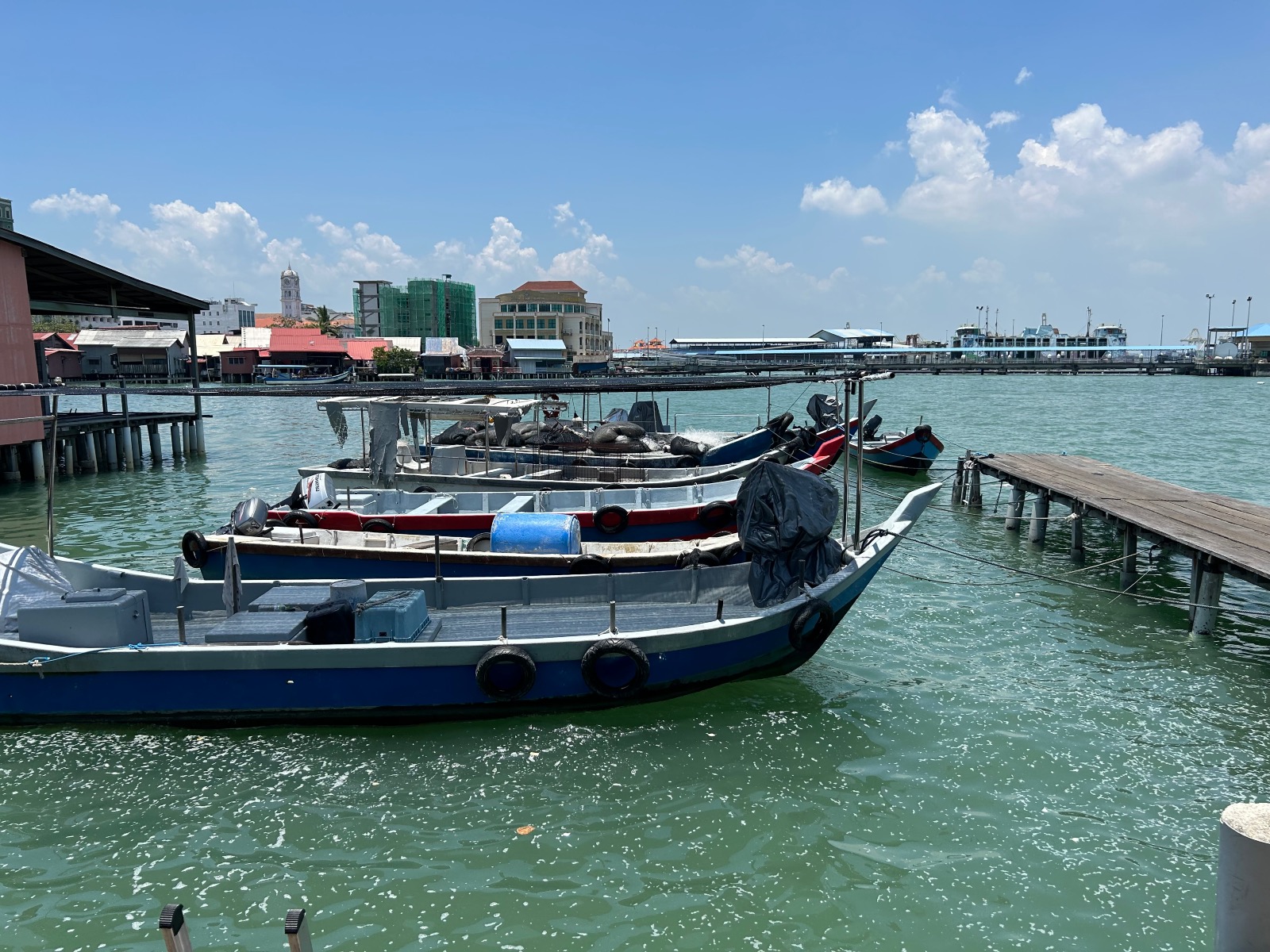Today we started at the Wat Chaiya Mankalaram, the Thai temple of the Reclining Buddha built in 1845 during colonial times. The exterior features characterised by lively colours and a grand golden pagoda. The entrance to the main hall is protected by the nagas, golden creatures similar to snakes and by two demons brandishing a sword. The interior contrasts with the exterior due to its simplicity: the hall is bare and dominated by an enormous 33-metre reclining Buddha draped in a gold sarong. The lying or reclining Buddha is an allegoric representation of interior peace and detachment from the world.
Next we toured the Penang botanical gardens called Taman Kebun Bunga and also known as “Waterfall Gardens” under British rule due to the waterfall found inside them. The gardens were inaugurated in 1884 and cover an area of around 29 hectares.
In addition to showcasing the flora and fauna, they constitute a ”green lush” for the city of Georgetown. We saw the cannon ball tree and many monkeys.
Next we went to the Baba Nyonya museum, also known as “Pinang Peranakan Mansion” or “Chung Keng Kwee Museum”, as it used to be the private residence of the Chinese Chief of the Hai San Secret Society. The building, a magnificent eclectic villa, is a true architectural marvel. The late Victorian influence is particularly evident in the profusion of cast-iron decorations, among the few in Penang to have survived the Japanese occupation. The splendid antique furniture and magnificent woodwork will leave us truly speechless.
We then visited the Khoo Clan house and temple. Khoo Kongsi temple, the most sumptuous in all of Malaysia whose walls, pillars and roofs are decorated with carvings representing the marks of Chinese master craftsmen. The temple was built around 650 years ago and was rebuilt in 1920 after a fire. It has an enormous historic and cultural value and used to be the place of gathering of a Chinese clan. The Chinese term “kongsi” in fact literally means “company” or “meeting hall”. These facilities had a number of functions and services both for families belonging to the same clan and to facilitate relationships between Chinese migrants, to celebrate civil and religious ceremonies - especially those relating to the cult of the ancestors - and to foster business relationships.
Our final visit was the Chew Jetty on the Georgetown seafront, a district featuring houses built on stilts forming a true village on water built by the first Chinese immigrants. The houses are mostly inhabited by Chinese families traditionally divided into “clans”. The jetties are divided according to the families or clans who inhabit them. Chew Jetty is the largest and boasts plenty of shops and restaurants.
